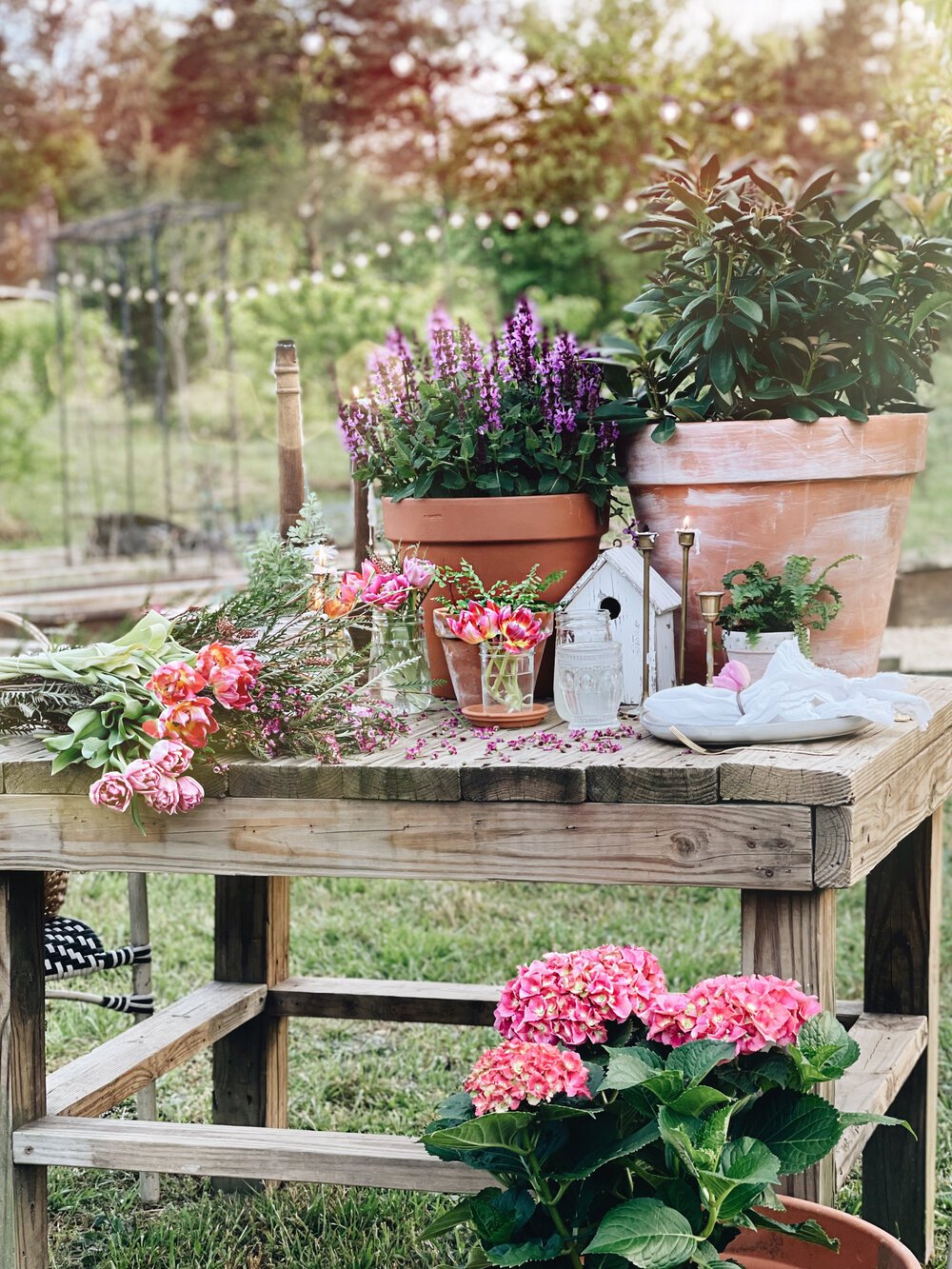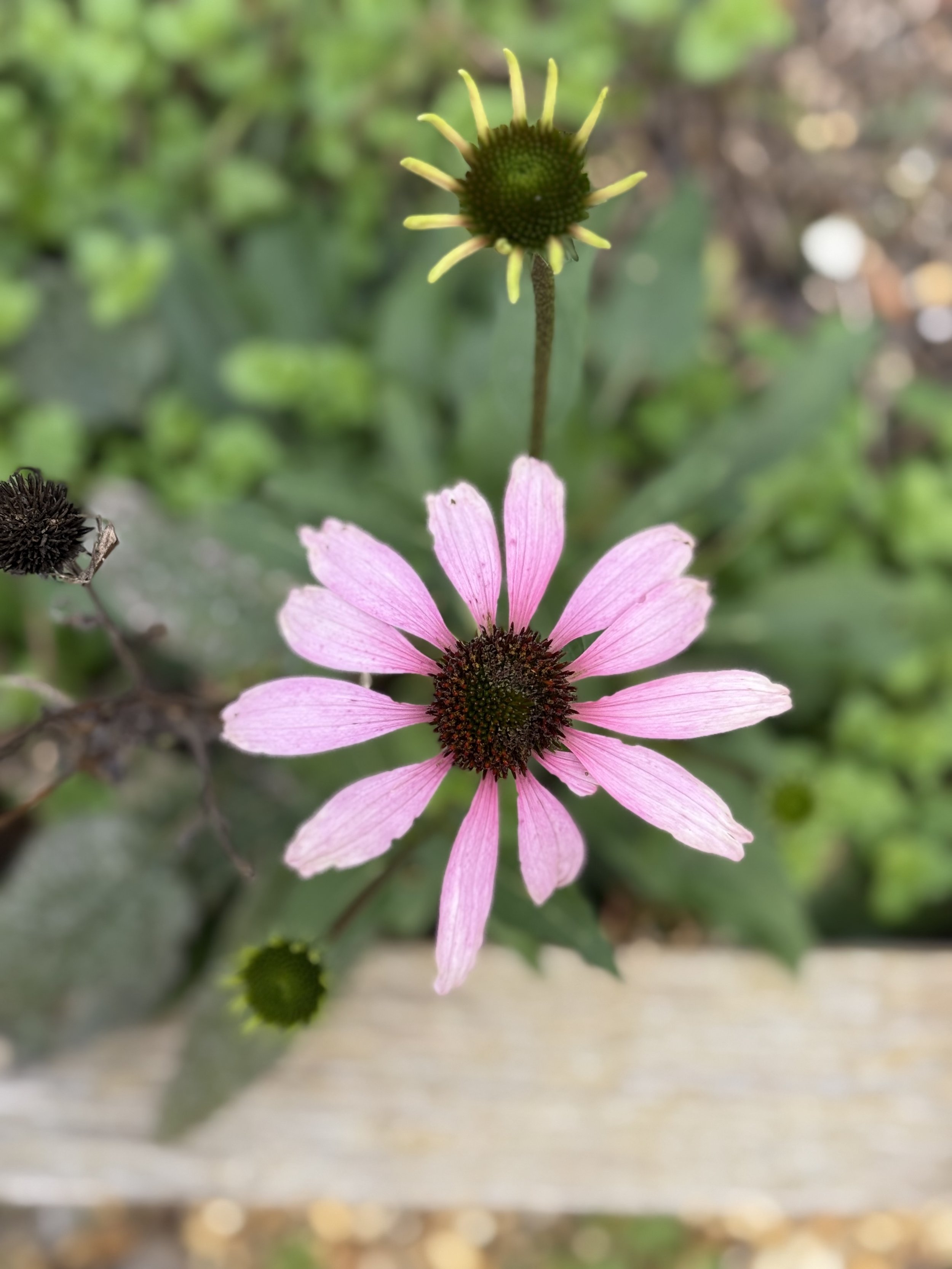Growing a Year-Round Flower Garden: A Seasonal Flower Guide
Having a garden that blooms year-round has been (and is still) such a rewarding experience for me! After a few years of careful planning, expanding garden beds, planting little by little, and trial and error, I can finally now say that every month there is something beautiful blooming.
A flowering garden offers numerous benefits. Flowers attract pollinators, which can help improve the productivity of your vegetable garden and overall garden biodiversity. They add beauty and life to the landscape, especially during the dull winter months, and having fresh flowers to pick for your home is an unmatched pleasure that also saves money!
By carefully selecting a mix of perennials, annuals, bulbs, flowering shrubs, vining plants, and herbs, you, too, can have something that is always in bloom, regardless of the season.
Keep reading to learn how!
Contents:
Planning Your Year-Round Flower Garden
Before you head to your nearest nursery and get carried away with all the beautiful options (I know it’s tempting!), consider the following factors before planting to ensure your garden thrives throughout the year:
1. Know Your Growing Zone and Climate
The first thing I would advise is knowing and understanding your USDA growing zone. This will help to determine which flowers will thrive in your region. Some plants tolerate frost better than others, while some require warmer temperatures to flourish.
Visit your local garden centers, nurseries, or even national parks and gardens to learn more about plants native to your region. For example, peonies might struggle in hot climates like zone 10 (although not impossible).
2. Analyze Your Garden Conditions
Sunlight Exposure – Determine how much sun different parts of your garden receive. Some flowers require full sun, while others love the shade.
Soil Type – Check whether your soil is sandy, loamy, or clay-heavy. Some flowers prefer well-draining soil, while others tolerate moisture better.
Pest Susceptibility – Consider which animals or insects frequent your garden and take steps to protect your flowers.
READ MORE: 23 Herbs and flowers for organic pest control in the garden
3. Plan for Continuous Blooming
Select flowers with different bloom times to ensure your garden remains vibrant all year. Consider overlapping bloom periods so that as one flower fades, another takes center stage. It also helps a lot when choosing flowers with a longer blooming time than those that only bloom a few weeks.
4. Consider Container Gardening
If space is limited or your soil isn’t ideal, container gardening is a great option. You can move potted flowers around to optimize sunlight and protect delicate blooms from harsh weather conditions.
5. Plan Your Garden for the Year Ahead
By planning your garden in advance, you can determine when and where to plant different flowers and schedule essential garden tasks. Keeping a gardening calendar helps ensure you stay on track with planting, maintenance, and seasonal preparations.
Grab my MONTHLY GARDENING GUIDE for the whole year here!
READ MORE: How to plan your garden, with a free planning template
Why Variety Matters: A Mix of Flower Types
To have a thriving, year-round flower garden, plant a diverse selection of flowers!
A variety of flower types ensures continuous blooms, creates visual interest, and supports a healthy ecosystem in your garden.
Different flower types have unique benefits, contributing to an aesthetically pleasing and functional garden. Who doesn’t love that?!
Perennials
Perennials return year after year, making them a long-term investment for continuous blooms. They often require less maintenance once established and help create structure in the garden.
Many perennials bloom at different times, which will offer a steady showcase of flowers throughout the seasons. Examples include lavender, echinacea, and garden phlox, which provide consistent color and attract pollinators.
READ MORE: A beginner’s guide to growing beautiful lavender
Annuals
Annuals complete their life cycle in one season, but they provide an abundance of blooms and colors. Many reseed themselves, giving the illusion of being perennials. They fill in gaps where perennials may have stopped blooming, ensuring constant vibrancy.
Petunias, marigolds, and cosmos are excellent choices for long-lasting color and can be planted in succession to maintain a full garden.
READ MORE: Tips for growing marigolds from seed
Bulbs
Bulbs like tulips and daffodils are an excellent way to start the growing season. Many bulbs bloom in early spring before other flowers wake up. They require little maintenance once planted and can multiply over the years, creating a naturalized look in your garden.
Some, like saffron crocus, bloom in the fall, ensuring that different areas of the garden have interest across multiple seasons.
READ MORE: When and how to plant spring bulbs
Flowering Shrubs
Shrubs such as hydrangeas and elderberries add height and structure to the garden while offering seasonal blooms and sometimes berries that attract birds. They provide background and foundation to garden beds, enhancing the visual appeal and adding layers to your landscape.
Many flowering shrubs, like lilacs and camellias, also have fragrant blooms that add another sensory element to your garden!
Vining Plants
Vining plants add vertical interest and can be trained to climb trellises, fences, or arbors, making them an excellent choice for maximizing garden space. Many vines produce abundant blooms and attract pollinators, creating a lush and dynamic garden environment. Star Jasmine, Wisteria, Honeysuckle, Mandevilla, Sweet Peas, and Bougainvillea are excellent choices that provide continuous color, fragrance, and visual appeal throughout different seasons.
Herbs
Herbs such as lavender and chives not only contribute beautiful blooms but also offer culinary and medicinal benefits. I simply love it when we have chive blossoms in the garden! They are beautiful, and you can make delicious recipes with them.
Many herb flowers attract beneficial insects like bees and butterflies, enhancing pollination throughout the garden. Additionally, herbs like rosemary and thyme continue to provide greenery and occasional flowers even in cooler months, ensuring year-round garden interest.
READ MORE:
Growing herbs: all the essentials to know!
My favorite chive blossom recipes:
Seasonal Flower list: A Year of Blooms
Here’s a list of seasonal flowers that can keep your garden in bloom throughout the year. These are flowers we specifically grow here at Azure Farm in Zone 7b, so it, of course, depends on your zone, but it will still give you a great starting point.
Winter Blooms
Winter can be a quiet time in the garden, but a few flowers push through the cold to brighten up the landscape.
December: Violas, Pansies, & Paperwhites – These cold-hardy flowers bring color to winter gardens and can often survive light frost.
January: Lenten Rose (Hellebore) – Thrives in cold weather, producing beautiful blooms. Ours usually bloom in late January.
February: Daffodils & Snowdrops – These early bloomers are always a sign that spring is on its way, offering cheerful yellow and white flowers.
Spring Blooms
Spring is my favorite time when the garden awakens, and vibrant flowers emerge.
March: Tulips & Hyacinths – Both offer stunning colors and fragrances to announce the arrival of spring.
April: Anemones & Ranunculus – These flowers provide bright, delicate blooms. Lavender also starts its long blooming season in April.
May: Chive Blossoms, Honeysuckle, Roses, & Poppies – A mix of edible, climbing, and classic flowers fills the garden with color and fragrance. Star Jasmine, Wisteria, Sweet Peas, and Bouagainvillaes will al also start blooming in Spring till late summer.
READ MORE: Growing chives from seed or bulbs
Summer Blooms
Long, warm days bring a flush of flowers that thrive in the sun.
June: Zinnias, Elderberry Blooms, Lollipop Verbena, & Gardenias – A vibrant mix of annuals and perennials keeps the garden lively. Mandevilla vines will start to bloom from early summer through the first fall frost.
July: Limelight Hydrangeas, Cosmos, & Echinacea – These flowers add height, texture, and pollinator-friendly options.
August: Sunflowers & Russian Sage – Bold sunflowers bring cheer, while Russian sage adds a delicate touch with its lavender-blue spikes.
READ MORE: A guide to growing gorgeous cut flowers
Fall Blooms
As summer fades, many flowers continue to bloom, ensuring a colorful autumn.
September: Dahlias & Zinnias – Dahlias thrive in the cooler temperatures of early fall, while zinnias continue to bloom.
October: Marigolds, Calendula, & Cosmos – These flowers provide warm hues and persist into early frosts.
November: Goldenrod, Roses, & Saffron Crocus – Roses often rebloom in fall, while saffron crocus offers a unique autumnal bloom.
READ MORE: 12 of the easiest flowers to grow
And don’t forget about trees that also bloom, such as the Magnolia tree, which can bloom from February till June, depending on the variety. They, too, bring so much beauty and delicious fragrance to the garden, often before most other flowers make their appearance in spring!
Additional Considerations for a Thriving Garden
1. Extend the Season with Ornamental Grasses & Berry Bushes
When flowers are scarce, ornamental grasses and berry-producing shrubs add visual interest and attract wildlife.
2. Utilize Succession Planting
By staggering plantings and selecting varieties with different bloom times, you can maintain continuous color.
3. Deadheading & Pruning
Regularly removing spent flowers encourages many plants to rebloom. Proper pruning also keeps shrubs and perennials healthy.
4. Protect Against Frost
Use mulch, row covers, or cold frames to protect delicate plants from unexpected frosts, extending their blooming period.
Creating a year-round flower garden is an achievable and rewarding endeavor, friend. By carefully selecting a variety of perennials, annuals, bulbs, flowering shrubs, and herbs, you can ensure that your garden remains vibrant through every season.
With thoughtful planning and care, your garden will provide beauty, attract pollinators, and offer fresh-cut flowers all year long. Whether you're planting in beds or containers, the joy of continuous blooms is well worth the effort!
Love, Annette xx
























